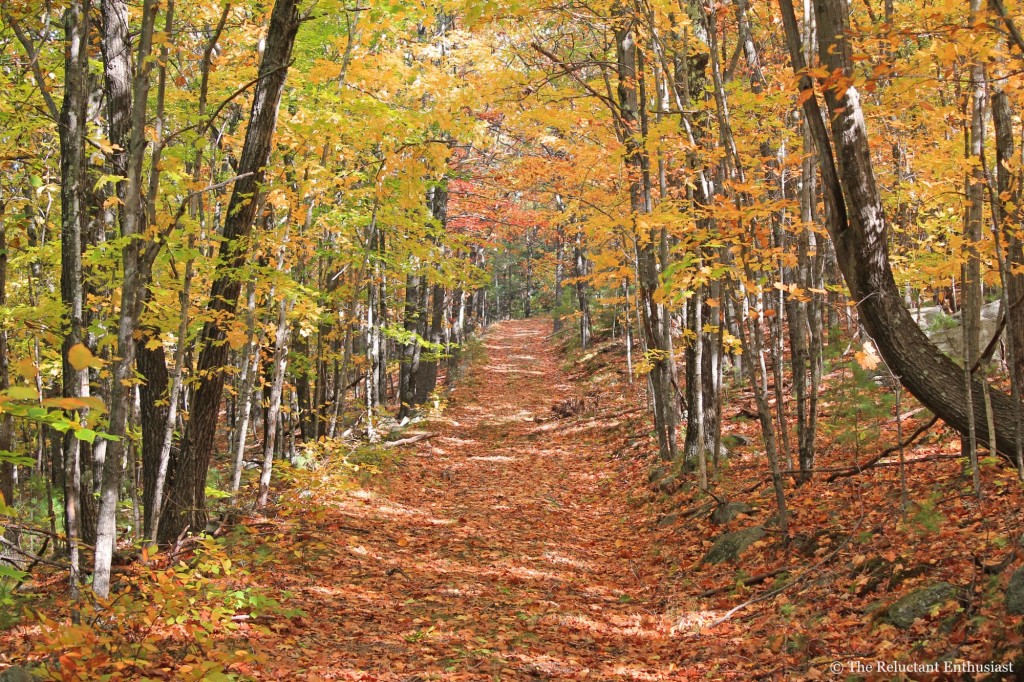
Autumn is one of New England’s finest seasons, with its brilliant colors & crisp, invigorating temperatures that inspire millions of people to head outdoors each year.
But have you ever wondered why the leaves change color in such a spectacular way? You could earn a PhD investigating only one aspect of this (seemingly) simple question, but the basics can be broken down into a few simple steps.
First, a quick primer about leaf color.
- The characteristic green of spring & summer is the result of chlorophyll – a pigment that absorbs red & blue wavelengths from sunlight and uses its energy to synthesize glucose from oxygen & carbon dioxide. Green light is not absorbed but reflected chlorophyll, which is why leaves appear green throughout the growing season.
- Chlorophyll breaks down easily, so plants are constantly synthesizing it during the summer months with the help of sunlight & warm temperatures.
- Leaves contain other colorful pigments throughout the growing season, including including xanthophylls (yellows) and carotenoids (oranges), which are masked by chlorophyll during spring & summer but revealed during its absence in autumn.
- Fall is best known for its brilliant reds & burgundies, which are a result of anthocyanins – the same pigments that give fruits & vegetables like blueberries, cherries, beets & pomegranates their color. Anthocyanins aren’t present in leaves during the growing season, but are produced as the result of a chemical reaction between sugars & proteins in the presence of sunlight.
- The color produced by anthocyanins is also a function of the pH in the cell. When conditions are more acidic, the pigments impart brighter reds, while alkaline conditions produce blue & purple tones.

Now that you know the basics, let’s hit the highlights of fall color:
- As autumn approaches, the days grow shorter & conversely, the nights grow longer. The increasing darkness signals to deciduous trees (i.e. the ones that lose their leaves) to prepare for the upcoming winter.
- Cells near the leaf stem begin blocking transport of nutrients to the leaves, and as these nutrients are blocked, chlorophyll production slows & eventually stops.
- As chlorophyll production stops, the previously masked carotenoids & xanthophylls are unveiled – revealing various shades of yellows & oranges.
- Because nutrient transfer is blocked, sugars become highly concentrated in the leaf. When these sugars react with proteins in the presence of sunlight, the resulting anthocyanins offer us radiant reds across the landscape.
What factors impact the colors you see?
Photoperiod is the primary determinant of fall color. Put simply, photoperiod is the cycle of light & dark in a 24-hour period, which (as you well know) tends to follow a predictable annual cycle. As noted above, trees cue in on the increasing darkness of fall to prepare themselves for the onset of winter.
Temperature and precipitation also have a notable impact on the intensity of color each year. Chlorophyll tends to disappear more rapidly with bright sunlight and cool nights, and dry conditions concentrate sugars in the leaf more readily, which fuels production of the brilliant reds.
Often, the most colorful foliage is predicted when warm, sunny days are followed by cool, dry nights.
Where can I go to see the best colors?
Fall foliage peak at different times in different parts of the country. If you’re interested in heading outdoors to enjoy the views this fall, check out one of these tools to learn when colors are approaching and/or at their peak.
Fall Foliage Prediction Map (US-wide)
The Weather Channel fall foliage map
New England peak fall foliage map
New England fall foliage forecast
New Hampshire fall foliage tracker
Vermont Fall Foliage Forecaster
Connecticut fall foliage report
Massachusetts fall foliage map & routes
Rhode Island fall foliage map & routes
If you’re interested in learning more about the science of fall colors, check out these additional resources below –
Autumn Changes in Deciduous Trees